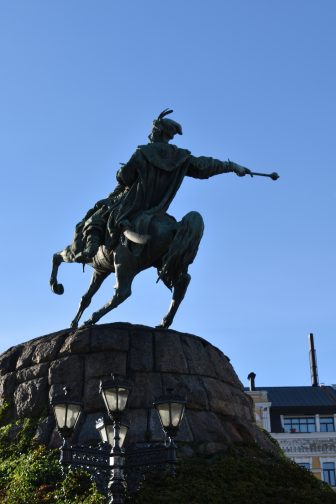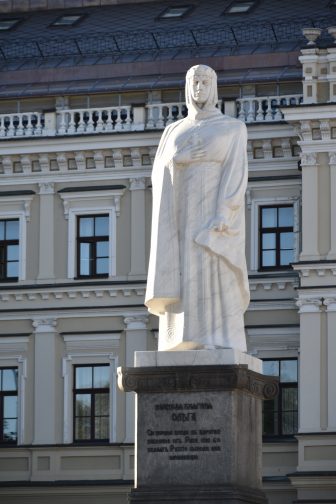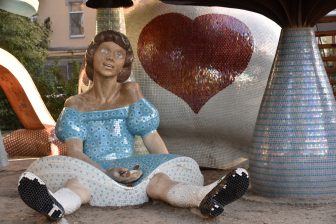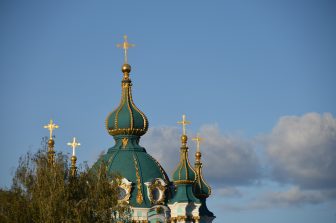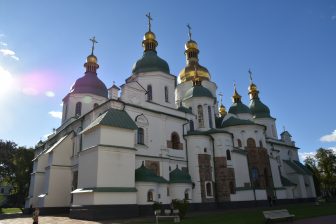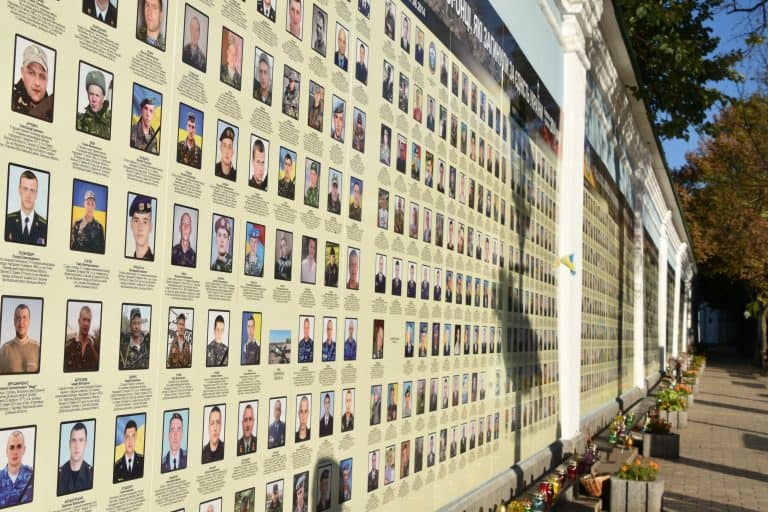
In the square outside St. Sophia’s Cathedral, the oldest cathedral in Kiev in Ukraine, there is a dynamic statue.
This is a Cossack Hero called Bohdan Khmelnytsky, who led this country to independence from Poland in the 17th century.
Ukraine was under the control of Poland and Lithuania around the year 1340, but the ruling was not strict for a long time.
However, in the 17th century, the Polish emperor imposed Catholicism on the Ukrainians, which gave rise to opposition among the people and led to a rebellion.
It did not have enough strength to become an independent country, so “Unfortunately, they asked Russia to help them” said our guide, Miloslava.
This statue was built in 1888 and originally they planned to carve sculptures on the stand as well, but did not have enough funds to do that, so this version was made.
Originally, the mace Khmelnytsky is swinging was supposed to point towards Poland, but for some reason, it actually points towards Russia.
Miloslava said “It is ironic now, isn’t it?”.
We kept walking on the wide street to St. Michael’s Cathedral.
We had visited here before, 7 years ago.
Just before entering the cathedral, there are some statues.
I knew that one of them was a statue of the Macedonian brothers who created the Cyrillic alphabet, but I did not know who the woman next to them was.
She is Olga, who ruled Kievan Rus’ in the mid 10th century.
During her assassinated husband’s rule, the government could collect tax at any time according to their necessity.
She realised that this caused the revolt, so she carried out a tax reform.
According to Miloslava, she seemed to be a wise ruler.
The next thing we came to notice was the outer wall of St. Michael’s Cathedral.
It was full of photographs of people’s face, which had not been there before.
These are the people who have died since 2014 Ukrainian revolution.
The 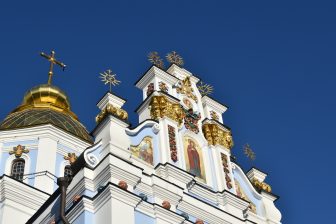
Miloslava told us that this conflict has not ended properly and, even now, sometimes people are killed, but the number has reduced considerably.
According to Miloslava, there are various viewpoints within Ukraine about the Russian invasion of Crimea, which followed the revolution.
Some people think that it does not matter too much because Crimea cost a lot to keep and does not pay back enough.
Miloslava herself thinks “Crimea should belong to the Tartars. Those are the people who originally lived there”.
After Crimea became a part of Ukraine during the Khrushchev time, Tartar people, whom Stalin had forced to move away, could come back to Crimea, but so far only a small number of people have returned, apparently.
We walked further and came to the park with lovely statues, which we had been to before.
When they discussed the redevelopment of this area, some people opposed, so the idea is still pending.
An artist made these sculptures and put them there temporarily and that is how this park was made.
This is on top of a hill and there was a new staircase which was opened only a couple of months before to go down the hill.
Kiev is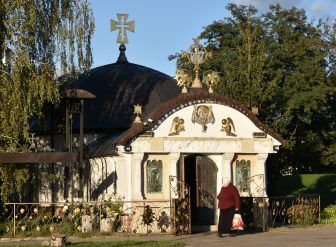
We saw the city view from here.
A little further ahead, there are some paving stones for the first church in Kiev and the site belongs to a museum.
There is a quaint looking church there, too, and according to Miloslava, this was built by some private citizens without permission of the museum.
They built this, imagining that the churches in the early days looked like this.
After that, we reached St. Andrew Church.
This was built in 1754 by Rastrelli, the Italian architect who built the Hermitage museum in Saint Petersburg, too.
Miloslava told us that this church is always having renovation work and it is rare that people can visit inside.
On the day we were there, too, the church was closed and we could only walk around the platform surrounding the church.
[ Sept.2018 ]

